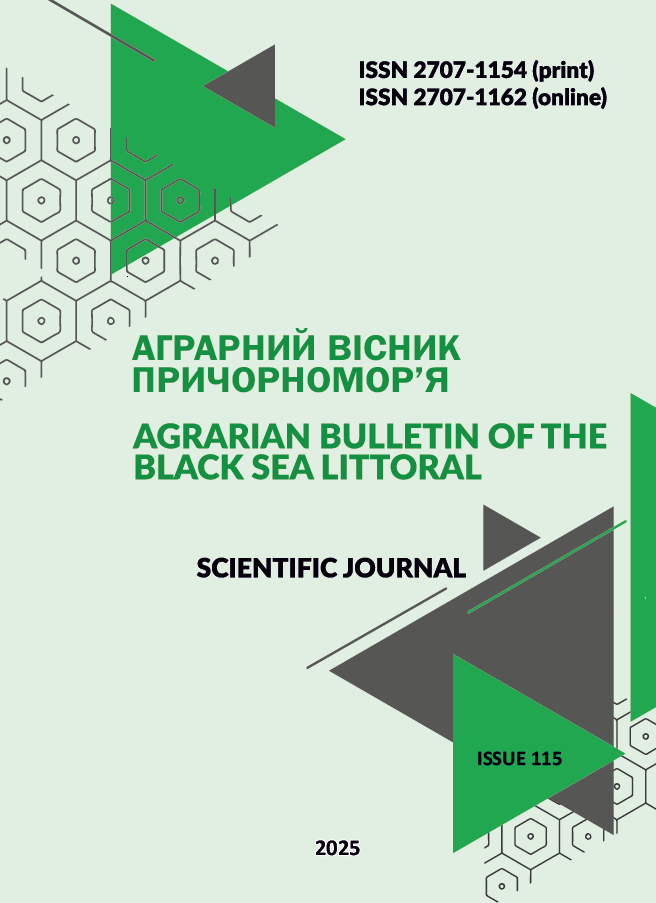VETERINARY AND SANITARY INSPECTION OF MILK PRODUCTION
DOI:
https://doi.org/10.37000/abbsl.2025.115.07Keywords:
lactating cows, milk, somatic cells, DSTU, sanitary measures.Abstract
Food safety and quality are critically important issues that should be given more attention worldwide, primarily from the perspective of nutritional quality and consumer health. Factors that can be a source of potential hazards in food products are accompanied by improper agricultural practices and a poor hygienic environment at all stages of the food chain. Doctors and scientists are vitally dependent on each other in promoting both public health and social justice for the benefit of all, and that the state of health cannot improve without access to clean water, quality food, and hygienic living conditions. A key issue to consider whether a given milk is of high quality and safe is the knowledge of the chemical, microbiological, and physical standards for dairy products. Thus, food safety is extremely important to protect the consumer from infectious agents, such as bacteria and parasites, which can be transmitted through the consumption of milk. Through safe food handling, the spread of diseases and deaths can be prevented. Safe food handling begins at the production stage and continues throughout the production process. We conducted a hygienic control of the conditions of keeping lactating cows, an analysis of the effectiveness of the implemented sanitary measures, and a study of milk for the content of somatic cells for the purpose of diagnosing mastitis, including its subclinical form. The compliance of milk with DSTU 3662 2018 raw cow's milk. Technical conditions was determined. The conditions of milk production were determined - the conditions of animal keeping, comparative features of microclimate indicators in typical premises and modern ones built for lactating cows. The studies proved that in the summer period of the year, the air temperature of cow sheds fluctuated within 25°C in typical premises and 23°C in modern designed premises, the level of relative air humidity exceeded the normative levels by 8%. The results obtained showed that the level of somatic cells in the milk of cows in the spring period was in the range from 90 to 400 thousand/cm$^3$, with 84% of the total number of studied samples corresponding to extra grade, 14% to higher and first-grade milk, and 2% with a somatic cell content above 501 thousand/cm 3 In the winter period, the percentage of extra-grade milk increased to 82% and to 12% of higher and first-grade respectively, according to the requirements of DSTU 36 62 2018. The absence of milk with a somatic cell content from 501 to 1500 thousand/cm 3 was noted, which can be explained by the high effectiveness of sanitary means for pre-milking and post-milking udder treatment.
References
Angelidis, A. S. (2015). The microbiology of raw milk. In P. Papademas (Ed.), Dairy microbiology: A practical approach (pp. [page numbers]). Taylor & Francis Group, LLC.
Addis, M., & Sisay, D. (2015). A review on major foodborne bacterial illnesses. Journal of Tropical Diseases, 3, 176.
Akhtar, S., Sarker, M. R., & Hossain, A. (2014). Microbiological food safety: A dilemma of developing societies. Critical Reviews in Microbiology, 40(4), 348-359. https://doi.org/10.xxxx/xxxxx
Brady, M. S., & Katz, S. E. (1988). Antibiotic/antimicrobial residues in milk. Journal of Food Protection, 51(1), 8-11.
DSTU 3662:2018 (effective from 27.06.2018) Raw cow's milk. Technical conditions. 12 p.
Food and Agriculture Organization. (2003). Workshop on the prospective on the application of lactoperoxidase system in milk handling and preservation in Indonesia. FAO. Jakarta.
Food and Agriculture Organization. (2011). A review of the Ethiopian dairy sector. FAO Sub Regional Office for Eastern Africa.
U.S. Department of Health and Human Services, Public Health Service, & Food and Drug Administration. (2015). Grade “A” pasteurized milk ordinance, 2015 revision.
Grace, D. (2015). Food safety in low and middle income countries. International Journal of Environmental Research and Public Health, 12, 10490-10507.
Handford, C. E., Campbell, K., & Elliott, C. T. (2016). Impacts of milk fraud on food safety and nutrition with special emphasis on developing countries. Comprehensive Reviews in Food Science and Food Safety, 15(1), 130-142.
Hempel et al.Uncertainty in the measurement of indoor temperature and humidity in naturally ventilated dairy buildings as influenced by measurement technique and data variability Biosyst. Eng.(2018) https://doi.org/10.1016/j.biosystemseng.2017.11.004
M.R. Mondaca.Ventilation systems for adult dairy cattle. Vet. Clin. Food Anim. Pract. (2019) https://doi.org/10.1016/j.cvfa.2018.10.006
Schauberger, G.; Piringer, M.; Petz, E. Steady-state balance model to calculate the indoor climate of livestock buildings, demonstrated for finishing pigs. Int. J. Biometeorol. 2000, 43, 154–162.
Downloads
Published
How to Cite
Issue
Section
License

This work is licensed under a Creative Commons Attribution-NonCommercial 4.0 International License.


